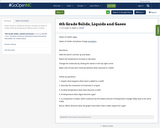
Great Visuals to clarify the abstract concepts of states of matter and how temperature affects states of matter.
- Subject:
- Science
- Material Type:
- Diagram/Illustration
- Simulation
- Date Added:
- 07/13/2020

Great Visuals to clarify the abstract concepts of states of matter and how temperature affects states of matter.

This brief video describes the laws that govern gas properties (Boyle's Law, Charles' Law, and Avogadro's Law). Assessments for the student to complete after viewing the video and suggested supplemental resources are also included.

This resource is a lesson plan in which a balloon covered flask with water is heated. Changes are recorded. There will be changes in the states of matter and a volume change while the total mass stays the same.
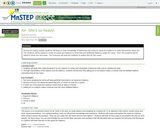
This is an introductory activity / lesson for a larger investigation into the properties of air. Students build a equal arm balance from simple materials to demonstrate that air has mass.
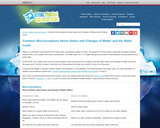
This article lists common misconceptions about states and changes of matter and the water cycle. It provides formative assessment probes and information about teaching for conceptual change.
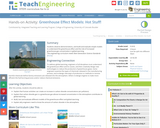
In this lesson, students observe demonstrations, and build and evaluate simple models to understand the greenhouse effect and the role of increased greenhouse gas concentration in global warming.
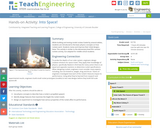
While building and testing model rockets fueled by antacid tablets, students are introduced to the basic physics concepts on how rockets work. Students revise and improve their initial designs. Note: This activity is similar to the elementary-level film canister rockets activity, but adapted for middle school students.

This is lesson one of the unit Weather Trackers (http://www.beaconlearningcenter.com/unitplan/11468.htm). Students learn by observation and hands-on activities the act of water changing state from a solid to a liquid to a gas.
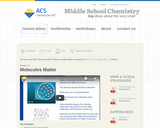
Students will describe their observations of water on the molecular level using the idea that water is composed of tiny molecules that are attached to one another. Students will investigate a drop of water hanging from a dropper and drops of water beading up on wax paper.

Students design and build paper rockets around film canisters, which serve as engines. An antacid tablet and water are put into each canister, reacting to form carbon dioxide gas, and acting as the pop rocket's propellant. With the lid snapped on, the continuous creation of gas causes pressure to build up until the lid pops off, sending the rocket into the air. The pop rockets demonstrate Newton's third law of motion: for every action, there is an equal and opposite reaction.

This is the second lesson in the unit Weather Trackers (http://www.beaconlearningcenter.com/unitplan/11468.htm). Students have the opportunity to work in groups to draw the rain cycle and make their own "movie" using a large cardboard milk carton and heavy white paper. Students are assessed on their ability to identify the pattern of the rain cycle and to sequence the events in order. Emphasis is placed on the Sun being the source of heat that drives the cycle.

In this activity, students will predict the outcome of chemical reactions based on balanced equations. They will combine calcium with water and confirm evidence of the reaction by testing for the presence of gas, then answer a series of questions based on their results.
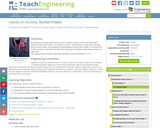
By making and testing simple balloon rockets, students acquire a basic understanding of Newton's third law of motion as it applies to rockets. Using balloons, string, straws and tape, they see how rockets are propelled by expelling gases, and test their rockets in horizontal and incline conditions. They also learn about the many types of engineers who design rockets and spacecraft.

Through this lesson, students will understand the relationship among the Sun, heat energy, evaporation, and condensation.

Great Visuals to clarify the abstract concepts of states of matter and how temperature affects states of matter.

Great Visuals to clarify the abstract concepts of states of matter and how temperature affects states of matter.
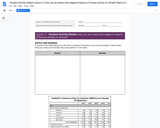
Examine the table in this activity from the 2014 Colorado Greenhouse Gas Inventory Report. Write down what you notice and wonder about the patterns in the table.
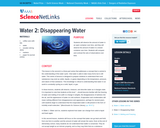
In this lesson, students will observe, measure, and describe water as it changes state. Students will investigate evaporation rates by measuring the water levels in open and closed containers over time.

This article assembles free resources from the Water, Ice, and Snow issue of the Beyond Penguins and Polar Bears cyberzine into a unit outline based on the 5E learning cycle framework. Outlines are provided for Grades K-2 and 3-5.